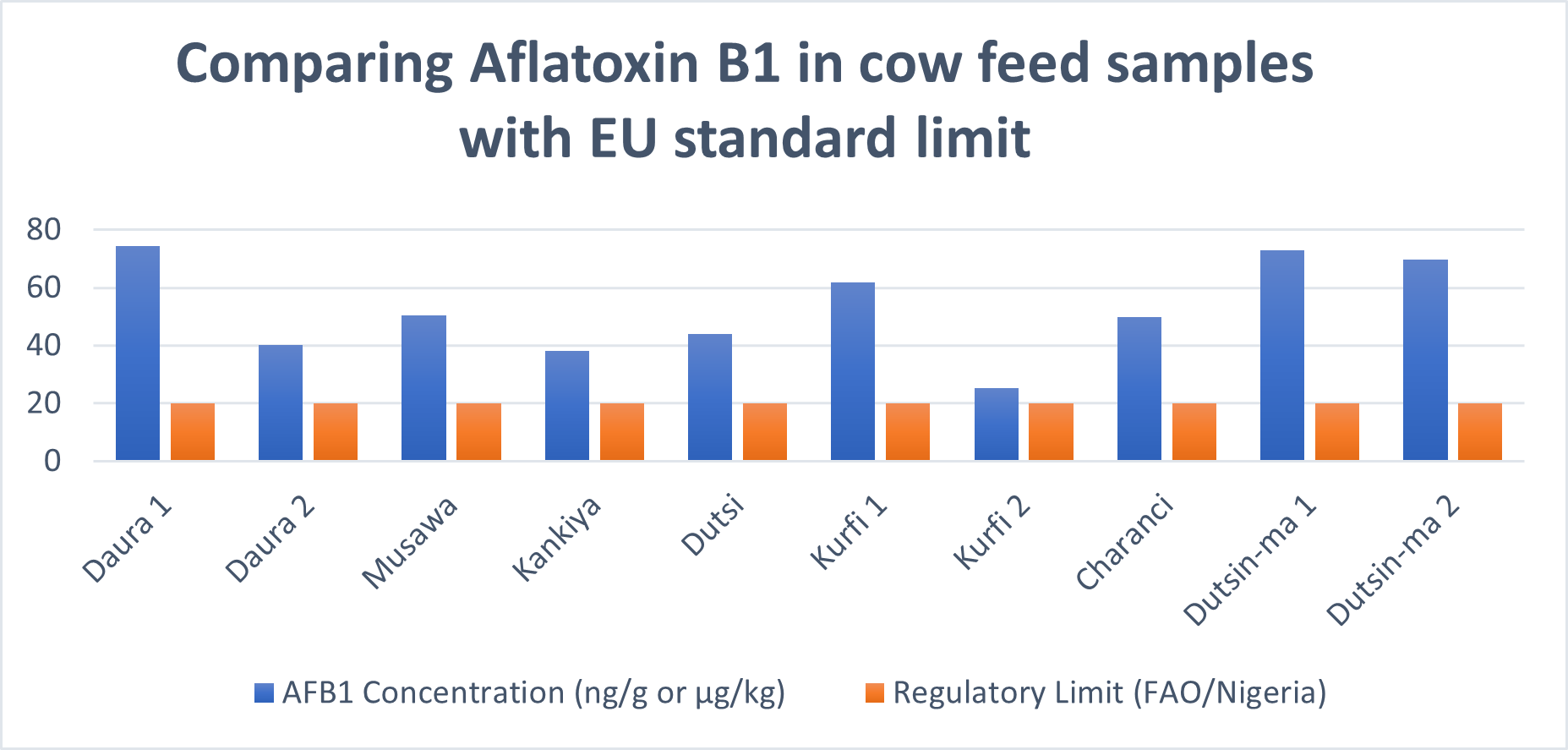Assessment of Aflatoxins Content in Cow Feeds and Milk in some Cattle Farms in Katsina State, Nigeria
Keywords:
Aflatoxin M1, Aflatoxin B1, Milk Safety, HPLC, Health Risk Assessment, MycotoxinsAbstract
Aflatoxins, potent mycotoxins produced by Aspergillus species, pose a significant risk to animal and human health. Contamination of dairy feed with Aflatoxin B1 (AFB1) leads to the secretion of its carcinogenic metabolite, Aflatoxin M1 (AFM1), into milk. This study assessed the prevalence and levels of aflatoxin contamination in cow feed and milk from selected cattle farms in Katsina State, Nigeria, and evaluated the associated human health risks. Twenty samples of cow feed and milk were collected from ten locations across Katsina State. The physicochemical parameters (crude protein, crude fibre, crude fat) of the samples were determined using standard methods. Aflatoxin B1 in feed and Aflatoxin M1 in milk were quantified using High-Performance Liquid Chromatography (HPLC). Health risks were assessed by calculating the Estimated Daily Intake (EDI), Margin of Exposure (MOE), and Cancer Risk (CR). All feed samples (100%) were contaminated with AFB1 at concentrations ranging from 25.31 to 74.44 µg/kg, with a mean of 52.65 µg/kg, vastly exceeding the FAO/Nigeria regulatory limit of 20 µg/kg. Consequently, 100% of the milk samples were contaminated with AFM1, with levels ranging from 5.86 to 90.28 µg/L. These values exceeded the stringent European Union safety limit (0.05 µg/L) by a factor of 117 to 1,806. The nutritional quality of both feed and milk was generally poor. Health risk assessment revealed alarmingly low MOE values (as low as 26.28) and significant cancer risks, particularly for individuals positive for Hepatitis B surface antigen (up to 0.9930 cases per 100,000 per year). The dairy production system in the studied region is severely compromised. The universal and extreme contamination of milk with AFM1 represents an acute public health crisis, necessitating immediate interventions including farmer education, improved feed storage, and stringent milk monitoring.

Published
How to Cite
Issue
Section
Copyright (c) 2025 Journal of Science Research and Reviews

This work is licensed under a Creative Commons Attribution-NonCommercial 4.0 International License.
- Attribution — You must give appropriate credit, provide a link to the license, and indicate if changes were made. You may do so in any reasonable manner, but not in any way that suggests the licensor endorses you or your use.
- NonCommercial — You may not use the material for commercial purposes.
- No additional restrictions — You may not apply legal terms or technological measures that legally restrict others from doing anything the license permits.




